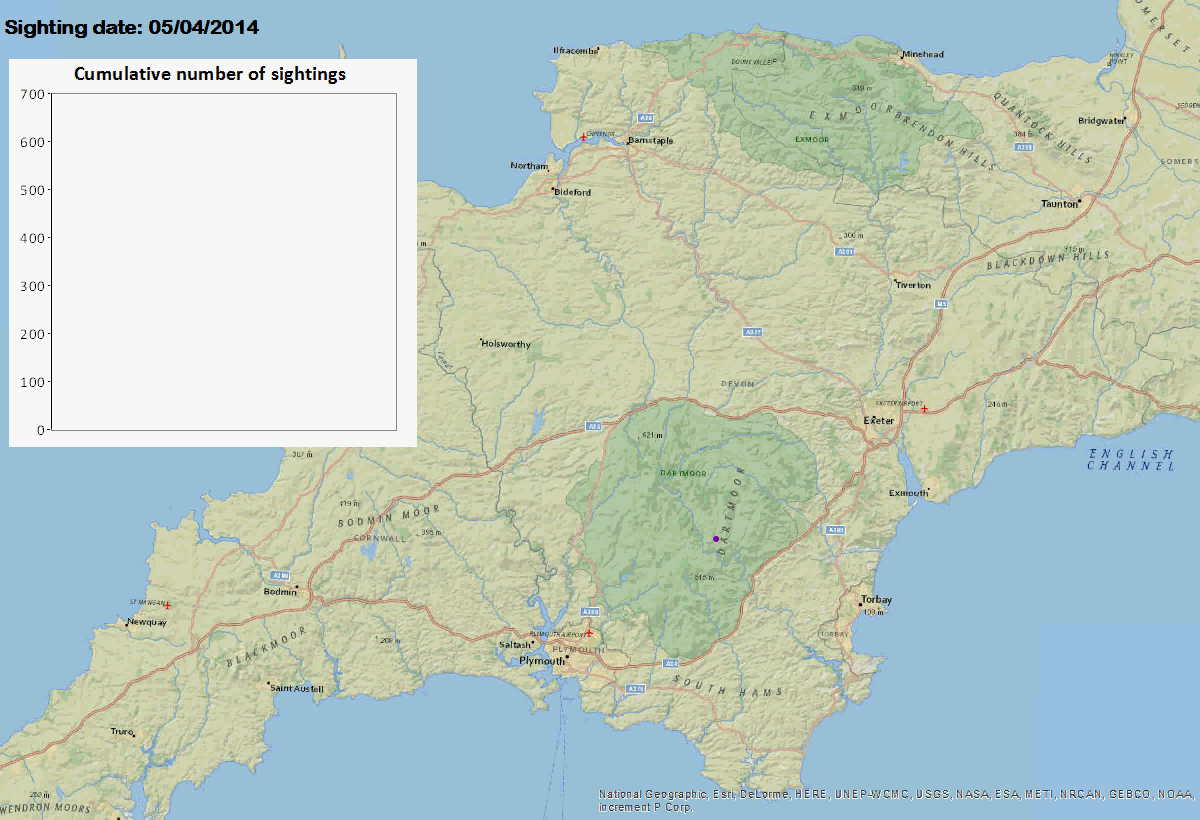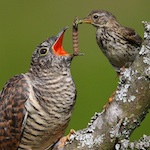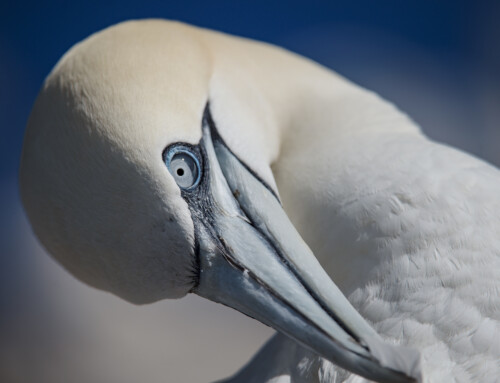Using citizen science and a web-based map to identify presence locations of Cuckoos in Devon
Common Cuckoos Cuculus canorus in the UK have shown sharp declines in recent decades, and the species is now red-listed (see BTO BirdTrends). It is essential to build up a thorough knowledge of the current distribution of Cuckoos in order to help understand the reasons underlying their decline, and to identify and possibly protect strongholds for the species.
As part of my PhD I aim to build an understanding of the breeding requirements of Cuckoos and ground-nesting birds on Dartmoor. To be able to do this, it is necessary to identify locations at which Cuckoos are found on Dartmoor and in the wider reaches of Devon. This information can then be used to build up an overview of possible breeding locations and identify sites for more in-depth study.
Carrying out survey work to establish Cuckoo presence locations over such a wide area was not possible on my own, and it was therefore necessary to recruit wider help for collecting this information. Citizen science projects such as eBird and the RSPB and BTO garden birdwatch events have proven hugely successful in collecting data on species presence. My project seemed the perfect opportunity to try this on a smaller scale for the purposes of my PhD. Cuckoos are an iconic bird, widely recognised by their unique call, and therefore especially suitable for a citizen science approach to gathering data.
My PhD is part of an existing effort to collect data on ground-nesting birds through local volunteers and the University of Exeter. As such, links with local organisations are already in place. Key collaborations are with Devon Birds and the Dartmoor National Park Authority. A meeting with both these organisations resulted in plans to set up a website on which people could report their Cuckoo sightings. Devon Birds set up an easy to use web form allowing people to report the date of their sighting, accompanied by an approximate grid reference and any additional information. Recorded sightings were instantly mapped on a live map where users could view all sighting locations.
The website went live on 7 April 2014; to promote it we distributed a flyer to the public through Devon Birds and the Dartmoor National Park Authority. Both Devon Birds and the Dartmoor National Park Authority promoted the website through their own websites, news releases and Twitter accounts. The Dartmoor National Park Authority additionally promoted the website in their visitor centres.
A total of 728 Cuckoo sightings were reported by 366 people during the season. The website was promoted mainly to target Dartmoor, resulting in the majority of sightings (c. 600) being located there. However, we also received over 100 sightings from the wider Devon area. The animation below shows the dates and locations of sightings across the season (only those sightings for which grid references were reported).
https://bou.org.uk/wp-content/uploads/2014/09/Zonneveld-cuckoos-Devon_birds_website_sightings1.gif

Click on map to see larger version with animated sightings added over time.
The first and last sightings were on 5 April and 25 June respectively. The majority of sightings were reported between 17 April and 6 June. If we compare this with the BTO Cuckoo tracking website information from this season, this seems to align well with the migration times seen in the satellite-tagged Cuckoos. The first tagged Cuckoo arrived in the UK on 21 April, and the first tracked BTO Cuckoo to leave was first seen outside the UK on 8 June.
All in all, creating a citizen science project and using a website to collect information from the public on Cuckoo locations throughout Devon was hugely successful. Reactions from the public were very positive, and a large number of sightings were gathered with relatively little local promotion. Setting up and promoting the website was relatively easy compared to the major effort which would have been needed to survey the sites, and had the added value of giving the opportunity to raise public awareness on the state of the Cuckoo in the UK, and involving the general public with the monitoring of their wildlife.
As is common in many citizen science projects, there are obvious limitations with the data. The sightings are biased towards areas that are popular recreational destinations and sightings are lacking in the more remote areas of the moor. Additionally, there is likely to be relatively high pseudo-replication of sightings due to the same birds being reported multiple times across the season. For these reasons, the resulting sightings map should not be considered as showing distributions, but only as a map indicating potential Cuckoo presence locations in the area.
Despite these limitations, the information has helped us to start identifying areas where (and when) Cuckoos are present in the Devon area. Although the sightings revealed that most reported Cuckoos were calling males, sightings also included some reports of bubbling females and females being mobbed by Meadow Pipits, providing valuable information on likely breeding areas. This information can be used to identify possible breeding sites for more in-depth study in coming years, and as a starting point for building up a detailed map of Cuckoo presence locations, which could be used in combination with other datasets to build up an understanding of the requirements for Cuckoo breeding success in the Dartmoor and wider Devon area.
In the future, promoting the website further in the wider Devon area could improve on the work from this year and give us more information on breeding sites outside Dartmoor. Sightings revealed that approximately 40% of the 366 people who reported sightings were members of Devon Birds, indicating that a large proportion of sightings were submitted by people within the birding community. Further promoting the website to target people outside the birding community could help increase the number of sightings significantly.
I would like to take this opportunity to thank Devon Birds and the Dartmoor National Park Authority for their involvement and collaboration in this work. Most of all, a big thank you to all the people that made the effort to look and listen out for Cuckoos, and reported their sightings to the website.
References and further reading
BTO BirdTrends 2013, Cuckoo (Cuculus canorus) View
BTO cuckoo tracking website View
Devon Birds website View
Devon Birds Cuckoo sightings page View
Dartmoor National Park Authority website View
Blog with #theBOUblog
If you want to write about your research in #theBOUblog, then please see here.






